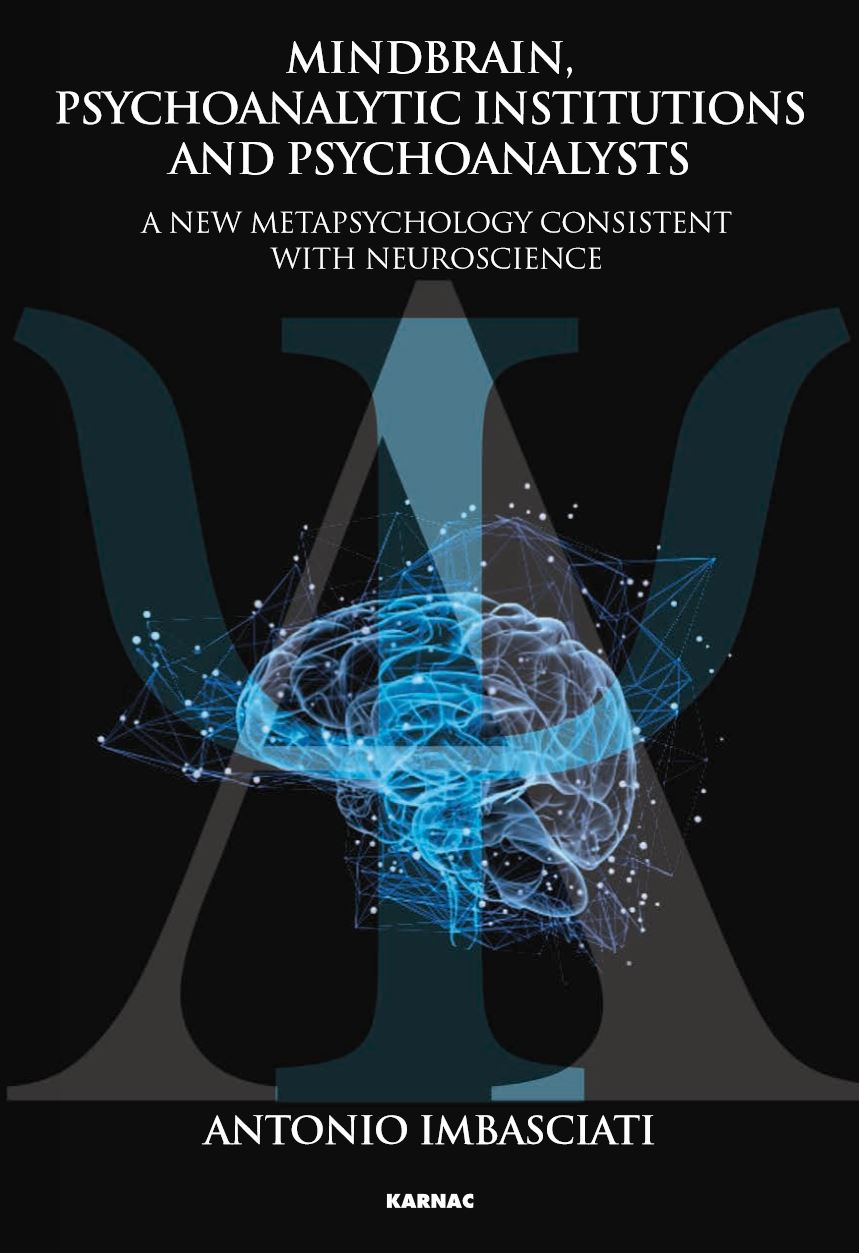
Mindbrain, Psychoanalytical Institutions and psychoanalysts
In this most recent book of mine I have collected and tried to summarise the ideas that I have matured in my long experience as a psychoanalyst and, at the same time, experimentalist researcher and then teacher, trainer and director of a university institute.
Over the years, my intention has been to systematise the various theories on the origins and functioning of the mind, which in psychoanalysis, although they have been produced over a hundred years, are still mixed up and confused, resulting in epistemological and general cultural inadequacy.
Now that I am reaching the end of my career, in this book I have wanted to indulge in a freer critical expression of what, in my opinion, limits the development of research in psychoanalysis, less so in the excellent clinical practice, but more in theory, or rather the theorisation, and in the integration in the current general scientific panorama. Psychoanalysts, in their traditional associations, have remained isolated, with respect to the other sciences of the mind, and recently, have been wary of neurosciences.
Today neurosciences approach the problems of unconscious affectivity, the traditional hunting ground of psychoanalysis, but they do so with other means (biotechnologies) and using another language. Here I outline a critical examination of Freud’s Energy-Drive Theory, which takes on the characteristics of a monstre sacré in the religiousness which can be noted underpinning the spirit of the psychoanalytic Institutions. This spirit is accompanied by a confusion between the different and often incompatible psychoanalytic theories: a mere example is the contradiction between the Freudian vision of a mind driven by endogenous forces which clash with external reality and the relational theories (from Klein, to Winnicott to Bion and many other more recent authors) which describe mental functioning as constructed in relationships and by relationships. I believe I can blame the poor social image that psychoanalysis has earned in the past few years, with other scientists and then in the general public, on this confusion of theories and haughty withdrawal into a single presumed orthodoxy.
At present, psychoanalysis seems to be in the midst of a serious crisis: on the level of its therapeutic application, it no longer seems to meet the new social needs of patients and therefore their demands, whilst on the theoretical level it no longer corresponds to sufficiently scientific criteria. An ex-President of the IPA, Otto Kernberg, has predicted the suicide of the psychoanalytic Institutions.
Emphasising the great gap between the clinical progress of psychoanalysis and its theoretical backwardness, vagueness and confusion, from the 1980s onwards I outlined my “Protomental Theory” and more recently a new metapsychology which can be congruent with neurosciences. These innovations, like those by other scholars, do not appear for the time being to be easily assimilated by the Institution, and are kept in the obscurity, while the explanations of Freud still appear as holy icons, to be preserved and worshipped. The “Mindbrain”, the name I use in this book, seems alien from the central interest proposed and almost prescribed by the Institution, which seems to want only clinical psychoanalysis, clinical cases and therapy! Yet Freud said (1922) that psychoanalysis was much more, and that the therapeutic result was to be considered secondary. I therefore believe that studying how the human mind functions is important as well as its relative therapeutic application. The genius of Freud has to be developed, not preserved like a precious relic.
In this book, I have outlined a theory on the origins and functioning of the mind, in new terms which are psychological and at the same time comparable with that we know today from neurosciences, in particular with reference to what they have recently been studying on unconscious emotions, subjectivity and intersubjectivity: the “affective neurosciences”. This outlines a new and different conception of the unconscious: an unconscious of neural mnestic structures. A mnestic trace, an engram, instead of drive: implicit memory, the memory of ways of functioning, memory that cannot be verbalised, which challenges the clinical practice of the talking cure. The problem of the relationship between the mind and the brain is discussed in this framework.
I also emphasise here the need for a new type of training for psychoanalysts, who to date have been trained for talking cures, in the perspective of a future competence for non-verbal communication and a scientific study which is no longer directly focused on the unconscious but on the skills acquired or that can be acquired by the consciousness, first of all that of psychoanalysts who aim to understand the unconscious. This new training may not only renew psychoanalysis in integration with other sciences for the progress of research into the human mind, but also find new therapeutic strategies that are more in line with the needs of patients in the current changed social climate.
